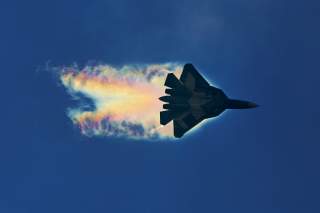Russia's New Tanks, Lethal Stealth Fighters (and More) vs. NATO: Who Wins?
The ultimate military question for 2016.
The study spells out exactly what its wargames determined would be necessary as a credible, effective deterrent.
“Gaming indicates that a force of about seven brigades, including three heavy armored brigades—adequately supported by airpower, land-based fires, and other enablers on the ground and ready to fight at the onset of hostilities—could suffice to prevent the rapid overrun of the Baltic states,” the study writes.
During the various scenarios explored for the wargame, its participants concluded that NATO resistance would be overrun quickly in the absence of a larger mechanized defensive force posture.
“The absence of short-range air defenses in the U.S. units, and the minimal defenses in the other NATO units, meant that many of these attacks encountered resistance only from NATO combat air patrols, which were overwhelmed by sheer numbers. The result was heavy losses to several Blue (NATO) battalions and the disruption of the counterattack,” the study states.
Latvia, Lithuania and Estonia could be likely Russian targets because all three countries are in close proximity to Russia and spent many years as part of the former Soviet Union, the study maintains.
“Also like Ukraine, Estonia and Latvia are home to sizable ethnic Russian populations that have been at best unevenly integrated into the two countries’ post-independence political and social mainstreams and that give Russia a self-justification for meddling in Estonian and Latvian affairs,” the study explains.
The Rand study maintains that, while expensive, adding brigades would be a worthy effort for NATO.
Buying three brand-new ABCTs and adding them to the U.S. Army would not be inexpensive—the up-front costs for all the equipment for the brigades and associated artillery, air defense, and other enabling units runs on the order of $13 billion. However, much of that gear—especially the expensive Abrams tanks and Bradley fighting vehicles—already exists,” the study says.
The actual NATO troop presence in Eastern Europe is something that is still under consideration, a recent report in Military.com sites sources saying NATO is now considering adding more troops to its Eastern flank as a way to further deter Russia.
However, while the Pentagon’s ongoing European Reassurance Initiative calls for additional funds, forces and force rotations through Europe in coming years, it is unclear whether their ultimate troop increases will come anywhere near what Rand recommends.
At the same time, the Pentagon’s $3.4 Billion ERI request does call for an increased force presence in Europe as well as “fires,” “pre-positioned stocks” and “headquarters” support for NATO forces.
Officials with U.S. Army Europe tell Scout Warrior that more solidarity exercises with NATO allies in Europe are also on the horizon, and that more manpower could also be on the way.
For example, an exercise known as Swift Response 16 began May 27 and is scheduled to run through June 26 in Poland and Germany; it include more than 5,000 soldiers and airmen from the United States, Belgium, France, Germany, Great Britain, Italy, the Netherlands, Poland, Portugal and Spain.
Kris Osborn became the Managing Editor of Scout Warrior in August of 2015. His role with Scout.com includes managing content on the Scout Warrior site and generating independently sourced original material. Scout Warrior is aimed at providing engaging, substantial military-specific content covering a range of key areas such as weapons, emerging or next-generation technologies and issues of relevance to the military. Just prior to coming to Scout Warrior, Osborn served as an Associate Editor at the Military.com. This story originally appeared in Scout Warrior.
Image: Creative Commons.

